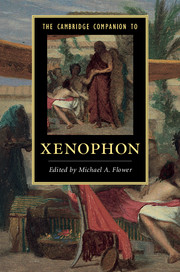Book contents
- The Cambridge Companion to Xenophon
- The Cambridge Companion to Xenophon
- Copyright page
- Contents
- Maps and Illustrations
- Contributors
- Preface
- Abbreviations
- Maps
- Introduction
- Part I Contexts
- Part II Individual Works
- Part III Techniques
- Part IV Major Subjects
- Part V Reception and Influence
- Important Dates in the Life of Xenophon
- Bibliography
- Index
- Cambridge Companions to…
- References
Bibliography
Published online by Cambridge University Press: 12 January 2017
- The Cambridge Companion to Xenophon
- The Cambridge Companion to Xenophon
- Copyright page
- Contents
- Maps and Illustrations
- Contributors
- Preface
- Abbreviations
- Maps
- Introduction
- Part I Contexts
- Part II Individual Works
- Part III Techniques
- Part IV Major Subjects
- Part V Reception and Influence
- Important Dates in the Life of Xenophon
- Bibliography
- Index
- Cambridge Companions to…
- References
- Type
- Chapter
- Information
- The Cambridge Companion to Xenophon , pp. 461 - 494Publisher: Cambridge University PressPrint publication year: 2016



